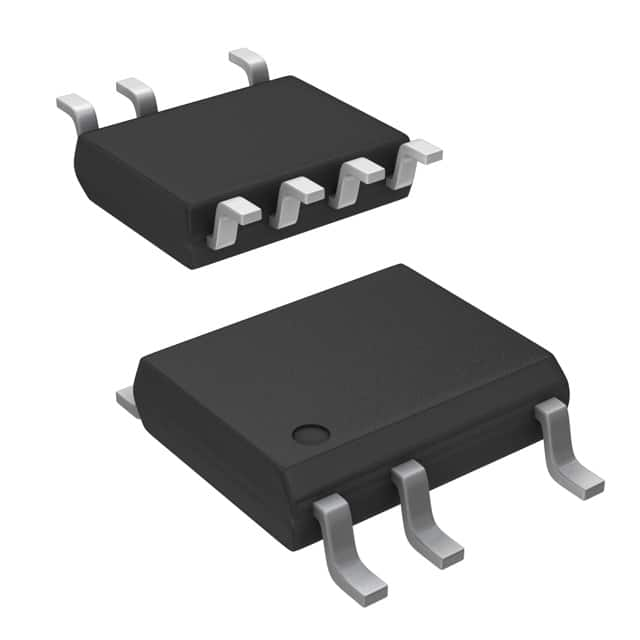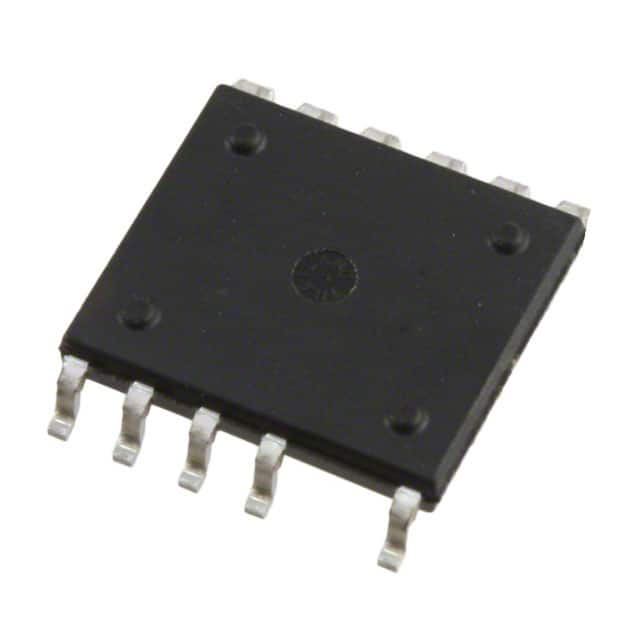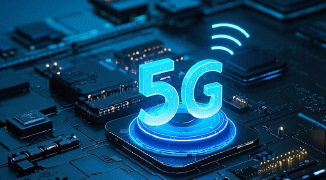The Revolutionary Shift in AI Chip Architecture Fueling Performance Leaps
2025/1/15 15:02:06
In the dynamic realm of modern technology, artificial intelligence (AI) has emerged as a transformative force, infiltrating nearly every aspect of our lives. From the intelligent assistants on our smartphones to the sophisticated algorithms powering self-driving cars, AI is reshaping the technological landscape. At the core of this AI revolution lies a pivotal element - the AI chip. As the demand for swifter and more efficient AI processing escalates, the architecture of these chips is undergoing a revolutionary transformation, propelling remarkable performance leaps.
1. The Basics of AI Chip Architecture
1.1 What is AI Chip Architecture?
AI chip architecture pertains to the design and arrangement of the hardware components within a chip, specifically tailored to expedite AI-related computations. These computations predominantly involve operations such as matrix multiplication, which is fundamental to neural network calculations. Unlike traditional general-purpose processors like CPUs, AI chips are engineered with an emphasis on parallel processing and high-throughput data handling to meet the intense computational demands of AI algorithms.
1.2 Traditional AI Chip Architectures
1.2.1 Graphics Processing Units (GPUs)
GPUs were among the first chips to be repurposed for AI workloads. Initially designed for rendering graphics in video games and computer-aided design, GPUs possess a large number of processing cores capable of performing parallel operations. In the context of AI, they are highly effective in handling the matrix multiplications required for neural network training. For instance, in deep-learning image recognition tasks, GPUs can rapidly process vast volumes of pixel data, enabling the neural network to learn patterns and features in the images at a much faster pace compared to CPUs. However, GPUs have their limitations. They consume a substantial amount of power, and their memory bandwidth can become a bottleneck when dealing with extremely large neural networks.
1.2.2 Field - Programmable Gate Arrays (FPGAs)
FPGAs offer a distinct approach to AI acceleration. These chips can be reconfigured by the user post-manufacturing, allowing for the implementation of highly customized logic circuits. In AI applications, FPGAs can be programmed to execute specific neural network operations more efficiently than general-purpose processors. They are particularly useful in scenarios where low-power consumption and real-time processing are crucial, such as in edge devices like smart cameras. FPGAs can be optimized to quickly analyze video streams and detect objects in real-time while consuming relatively less power compared to GPUs. But the reconfiguration process of FPGAs can be intricate and time-consuming, and their performance may not match that of some dedicated AI chips in large-scale neural network training.
2. The Need for a Revolutionary Shift in AI Chip Architecture
2.1 The Growing Computational Demands of AI
As AI algorithms continue to grow in complexity, with neural networks becoming deeper and more intricate, the computational requirements have skyrocketed. For example, the training of large-language models like GPT-3 demands an enormous amount of computing power. Traditional AI chip architectures are struggling to keep pace with these demands. The need for shorter training times, lower power consumption, and more efficient handling of large-scale data sets has become a pressing issue in the AI community.
2.2 The Limitations of Existing Architectures
The power consumption of traditional AI chips, especially GPUs, is a major concern. In large-scale data centers where thousands of chips are utilized for AI training, the energy costs can be exorbitant. Moreover, the memory hierarchy and bandwidth limitations of existing architectures often lead to inefficiencies. For example, the "von Neumann bottleneck" in traditional architectures, where data transfer between the CPU and memory is much slower than the processing speed, severely impedes the performance of AI algorithms that require continuous access to large amounts of data.

3. The New Wave of AI Chip Architectures
3.1 Neural Network Processors (NNPs)
3.1.1 Design Principles
Neural network processors are designed from the ground up to accelerate neural network computations. They often feature a highly parallel architecture with specialized hardware units for neural network operations such as convolution and pooling, which are prevalent in deep-learning algorithms for image and speech processing. These processors are optimized to minimize data movement between different components, thus reducing the von Neumann bottleneck. For example, they may have on-chip memory structures that are closely integrated with the processing cores, enabling faster access to data during neural network calculations.
3.1.2 Performance Advantages
NNPs can achieve significantly higher performance per watt compared to traditional GPUs and CPUs. In tasks like real-time object detection in autonomous vehicles, NNPs can rapidly process the large amounts of sensor data from cameras and lidar sensors, enabling the vehicle to make split-second decisions. Their specialized design allows for faster execution of neural network algorithms, shortening the training time for complex models. This not only enhances the efficiency of AI applications but also makes it more viable to deploy AI in resource-constrained environments such as mobile devices and edge computing devices.
3.2 Brain - Inspired Architectures
3.2.1 Spiking Neural Networks (SNNs)
Spiking neural networks are modeled after the way biological neurons communicate in the brain. Instead of using continuous-valued signals like traditional neural networks, SNNs employ discrete spikes or pulses. This approach has the potential to be much more energy-efficient. In a biological system, neurons only consume energy when they fire a spike, and SNNs aim to replicate this behavior. For example, in a sensor-based AI application, an SNN-based chip can analyze incoming sensor data in a more energy-efficient manner. When a significant event is detected by the sensor, the SNN neurons will spike, triggering further processing. This reduces the overall power consumption as the chip only actively processes data when necessary.
3.2.2 Memristor - Based Architectures
Memristors, or memory resistors, are a novel type of electronic component that can store information and perform computations simultaneously. In AI chip architecture, memristor-based designs offer the potential for ultra-high-density storage and in-memory computing. By integrating memristors into the chip architecture, data can be processed directly in the memory, eliminating the need for frequent data transfers between memory and processing units. This can lead to substantial improvements in performance and power efficiency. For example, in a neural network implemented using a memristor-based architecture, the synaptic weights can be stored in memristors, and the neural network calculations can be carried out directly on the memristor arrays, reducing the time and energy required for data access and processing.
4. The Role of Emerging Technologies in the Shift
4.1 Quantum - Inspired Computing in AI Chips
4.1.1 Concepts and Theories
Quantum-inspired computing borrows certain concepts from quantum mechanics, such as superposition and entanglement, to enhance the performance of classical computing in AI applications. In AI chip design, this can lead to new algorithms and architectures that can solve complex optimization problems more efficiently. For example, quantum-inspired algorithms can be utilized to optimize the weights of neural networks during training. These algorithms can explore a much larger solution space in a shorter time compared to traditional optimization algorithms, potentially resulting in better-performing neural networks.
4.1.2 Potential Impact on AI Chip Performance
The integration of quantum-inspired computing into AI chips has the potential to revolutionize the way AI algorithms are processed. It could enable faster training of large-scale neural networks, especially in applications where complex optimization problems are involved, such as in financial risk prediction and drug discovery. Although full-fledged quantum computing is still in its nascent stage, quantum-inspired techniques can be implemented in classical AI chips to gain some of the benefits of quantum computing, such as improved computational efficiency and the ability to handle more complex data patterns.
4.2 3D Integration Technology
4.2.1 How 3D Integration Works
3D integration technology enables the stacking of multiple layers of chips or components on top of each other. In the context of AI chips, this can be employed to improve the communication between different components, such as the processing cores and the memory. By vertically integrating the memory and the processing units, the distance that data has to travel is significantly reduced, leading to faster data access and higher memory bandwidth. For example, in a high-performance AI chip, 3D integration can be used to stack multiple layers of memory close to the neural network processing cores, ensuring that the data required for neural network calculations is always readily available.
4.2.2 Advantages for AI Chip Architecture
3D integration technology offers several advantages for AI chip architecture. It can enhance the overall performance of the chip by reducing the latency associated with data transfer. Additionally, it can enable the integration of different types of components, such as analog-to-digital converters and neural network processing units, in a more compact and efficient manner. This can lead to the development of more powerful and energy-efficient AI chips, especially in applications where size and power consumption are critical factors, such as in mobile and edge computing devices.
5. The Impact of the Revolutionary Shift in AI Chip Architecture
5.1 On AI Applications
5.1.1 Faster and More Accurate AI Models
The new AI chip architectures enable the training and deployment of faster and more accurate AI models. In healthcare, for example, AI-based diagnostic tools can analyze medical images more rapidly and precisely, leading to earlier disease detection and improved patient outcomes. In financial services, high-frequency trading algorithms can make more informed decisions in real-time, based on the rapid analysis of large volumes of market data.
5.1.2 Broader Adoption of AI
The improved performance and efficiency of AI chips make it more feasible to deploy AI in a wider range of applications. In agriculture, AI-powered drones and sensors can monitor crop health in real-time, optimizing irrigation and fertilization. In smart cities, AI-based traffic management systems can reduce congestion by analyzing real-time traffic data and adjusting traffic signals accordingly. The lower power consumption and smaller size of the new AI chips also make it possible to integrate AI into everyday devices, such as smartwatches and home appliances.
5.2 On the Semiconductor Industry
5.2.1 New Business Opportunities
The shift in AI chip architecture creates new business opportunities for semiconductor manufacturers. Those who can develop and produce these innovative chips stand to gain a significant market share in the burgeoning AI market. There is also a growing demand for specialized software and tools that are compatible with the new chip architectures, creating opportunities for software developers and tool-makers.
5.2.2 Research and Development Focus
Semiconductor companies are now focusing more on research and development in AI chip architecture. This includes exploring new materials, such as graphene-based materials for more efficient data transfer, and developing new manufacturing processes to enable the production of these advanced chips. The competition in the AI chip market is driving innovation, leading to a continuous improvement in chip performance and efficiency.
The revolutionary shift in AI chip architecture is not only a technological advancement but also a game-changer for the AI industry and the broader technology ecosystem. As these new architectures continue to evolve and mature, we can anticipate even more substantial performance leaps in AI applications, opening up new possibilities for innovation and development in various fields. From healthcare to transportation, from finance to entertainment, the impact of these advanced AI chips will be far-reaching, shaping the future of our technology-driven world.
Related information
Subscribe to IC-MAX!
Featured PartsMore

-
LNK304DN-TL Power Integrations

-
LNK304GN-TL Power Integrations

-
LNK304DG-TL Power Integrations
-
TNY277PN Power Integrations
-
TNY276PN Power Integrations
-
TNY278PN Power Integrations

-
TNY278GN-TL Power Integrations

-
TNY280GN-TL Power Integrations

-
TOP266KG-TL Power Integrations
-
TOP258PN Power Integrations
-
TOP253PN Power Integrations
-
TOP253PNAU Power Integrations







